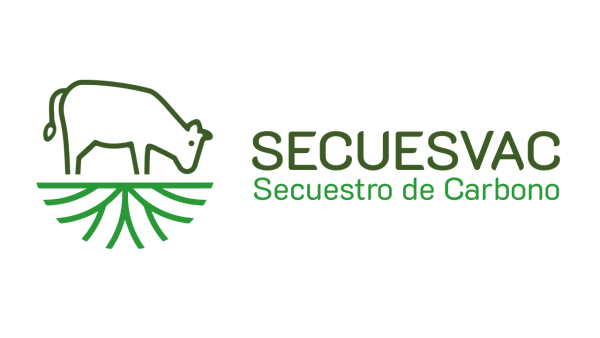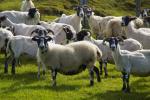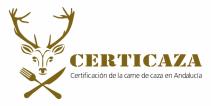
SECUESVAC Operational Group: Optimizing carbon sequestration in agricultural soils associated with beef production
- Type Operational group
- Status In progress
- Execution 2024 -2027
- Assigned Budget 548.889,00 €
- Scope Supraautonómico
- Autonomous community Asturias, Principado de; Madrid, Comunidad de
- Main source of financing CAP 2023-2027
- Project website GO SECUESVAC
Among the benefits of applying manure to the soil is its ability to retain carbon, thus contributing to carbon sequestration and the reduction of greenhouse gases.
The project's mission is to study carbon sequestration in Spanish beef cattle farms and develop a support tool for ranchers and industry professionals that will help them understand the carbon sequestration capacity of their soils and learn improvement techniques.
This project primarily addresses two key needs: the beef sector's response to social and political pressure to develop its own strategy, complementary to that required by government agencies, to contribute to climate change mitigation. The need to maintain and conserve the environment and the activity in which beef production takes place in rural areas. This activity also provides a wide range of ecosystem services in our region.
- Block 1. Typing of systems and selection of those farms that will ultimately be included in the sampling.
- Block 2. Analysis of the two main Soil Organic Carbon sampling protocols in Europe to extract the strengths of each methodology for consideration in the harmonized protocol to be developed. Training of members on the sampling protocol. Sampling conducted on all participating farms.
- Block 3. Laboratory analysis of soils, obtaining carbon content (SOC) (tC/ha) by group/system. Statistical analysis of the results and obtaining average data by type.
- Block 4. Identification of the best techniques associated with optimizing carbon sequestration using all the information obtained to date. Development of best-practice guides for increasing carbon sequestration.
- Block 5. Design and development of a free tool for the beef sector, comprising two modules: a specific module for the analysis of ex-ante carbon sequestration in relation to soil organic carbon (SOC, tC/ha), and another module in which users can learn about the Best Available Techniques (BAT) available to the beef sector. The objective of this activity is to estimate, after implementation, the reduction in GHG emissions and their impact in terms of carbon sequestration.
- Block 6. Development of the app to obtain soil information. Once validated, the app will be implemented on farms and companies in the sector, thereby recruiting new users. Finally, the results will be presented.
The planet is being affected by an increase in greenhouse gas concentrations in the atmosphere due to anthropogenic emissions. There is a global awareness of the need to act to limit this rate of progress and reduce these concentrations. At the international level, the 1979 World Climate Conference warned of this need, which was concretized in 1990 with the Intergovernmental Panel on Climate Change (IPCC) Assessment of the State of the Global Climate. In 2015, at COP21 in Paris, the Parties reached a binding agreement to combat climate change and accelerate and intensify the actions and investments necessary for a sustainable, low-carbon future.
The 2030 Agenda also addresses environmental issues, and proposes among its Sustainable Development Goals the adoption of measures to combat climate change by reducing greenhouse gas emissions in all sectors involved. The FAO is already working on assessing soils as sources and sinks of carbon. In 2023, they developed the first Global Soil Carbon Assessment for Grasslands. There is a European policy requiring countries to make progress in reducing emissions and sequestering carbon.
Highlighted in this goal is the commitment to increase the absorption of 310 million tons of CO2 equivalent by 2030. According to the 2021 inventories, beef cattle generate 3.57% of GHG emissions (MITECO; 2023). The inventory values consider only emissions associated with enteric fermentation and manure management. However, they do not assess carbon sequestration.
Determine the carbon sequestration capacity of pastures, soils, and crops associated with beef production, in order to optimize carbon sequestration, identifying best management practices, and developing a decision-support tool to quantify their carbon footprint and the sequestration potential of their farms.
- Outcome 1. Characterization of beef farms. A list of the selected farms will be compiled, and information will be collected from them using a questionnaire. The information obtained will be compiled into a database. The sector will have access to information that represents its manure management.
- Outcome 2. Harmonization of the soil sampling protocol and implementation of sampling by partners. An updated protocol will be generated, adapted to the characteristics of Spanish farms. Farmers will acquire new knowledge and will be able to promote these practices to raise awareness of their benefits.
- Outcome 3. Analysis of organic carbon content and determination of a representative sequestration value by type. Participants will receive a report on the results obtained, and this information will be used to conduct a statistical analysis to obtain representative data by type of operation, providing a generic estimate for the sector.
- Outcome 4. Identify the most appropriate management practices to maximize carbon sequestration in pastures and manure application. Good practice guides will be developed for all livestock farmers and industry professionals, enabling them to maximize carbon sequestration.
- Outcome 5. Design and development of a carbon footprint and sequestration calculation tool using a Life Cycle Assessment approach. Livestock farmers will have access to quantitative data on the carbon footprint associated with their type of crop and will also be able to understand the sequestration capacity of their soils.
- Outcome 6. Implementation, validation, and improvement of the tool for obtaining information on soils associated with beef cattle farming. The tool will incorporate an ex-ante SOC calculation module and the incorporation of BATs to improve its carbon footprint and carbon sequestration results, thus potentially reducing its carbon emissions into the atmosphere.
- Outcome 7. Implementation of the app in the sector. New users added. The goal of the entire project is to provide the sector with a highly useful tool that allows it to accurately measure its emissions and carbon sequestration capacity, thereby meeting the shared goal of reducing greenhouse gas emissions.
- Coordinator/entity name: INTERPROFESSIONAL BEEF ORGANIZATION - PROVACUNO
- Postal address: AVENIDA PIO XII, 6 - 3º, 28016, MADRID
- Coordinator/entity email: administración@provacuno.es
- Telephone: 917129125
Among the opportunities this project offers are: The participation of the Interprofessional Association and several cooperatives and associations in the sector means involving a significant number of technicians and producers, which facilitates co-innovation and the dissemination of results throughout the beef production sector. It is an opportunity to attract young people and women.
The project is being proposed at a time when the European Commission is considering the objective of carbon sequestration in agricultural soils, within the framework of Objective 55. We will develop a useful tool for livestock farmers, but also usable by public authorities to assess carbon absorption in grazing and beef cattle fattening systems. We will develop a Good Practice Guide to optimize soil carbon sequestration on beef cattle farms.
As a post-project objective, once the tool has been evaluated, Provacuno aims to propose its recognition as a BAT to the Ministries of Agriculture and Ecological Transition for inclusion in the ECOGAN. Within the framework of Objective 55, the Spanish Government, through the OECC, is promoting a draft Royal Decree that will include agricultural land as carbon sinks. Therefore, the carbon sequestration rights associated with a farm will have a market value and, once certified, can be submitted to the government to offset emissions. The results of this project can be used for this purpose by both livestock farmers and certifiers.
The European Commission recently launched its draft Environmental Claims Regulation (COM 2023 166 final) for various products, which will allow the environmental achievements of a value chain to be displayed on the label. Producers could use the results of this project to highlight environmental best practices.
- ORGANIZACIÓN INTERPROFESIONAL DE LA CARNE DE VACUNO - PROVACUNO
- ORGANIZACIÓN INTERPROFESIONAL DE LA CARNE DE VACUNO - PROVACUNO
- UNIÓN DE COOPERATIVAS ASOCIACIÓN GALEGA DE COOPERATIVAS AGROALIMENTARIAS - AGACA
- ASOCIACIÓN AGRARIA JÓVENES AGRICULTORES - ASAJA
- ASOCIACIÓN REGIONAL DE PRODUCTORES DE VACUNO DE CARNE DE CASTILLA Y LEÓN - ASOPROVAC CASTILLA Y LEÓN
- ASOCIACIÓN DE PRODUCTORES DE VACUNO DE CARNE CASTILLA-LA MANCHA - ASOPROVAC CASTILLA-LA MANCHA
- COOPERATIVAS AGRO-ALIMENTARIAS PRINCIPADO DE ASTURIAS, UNIÓN DE COOPERATIVAS
- GANADEROS DE MADRID SOCIEDAD COOPERATIVA MADRILEÑA, GANADEMAD
- ASOCIACIÓN DE CRIADORES DE RAZA BOVINA PARDA DE MONTAÑA - ARAPARDA






